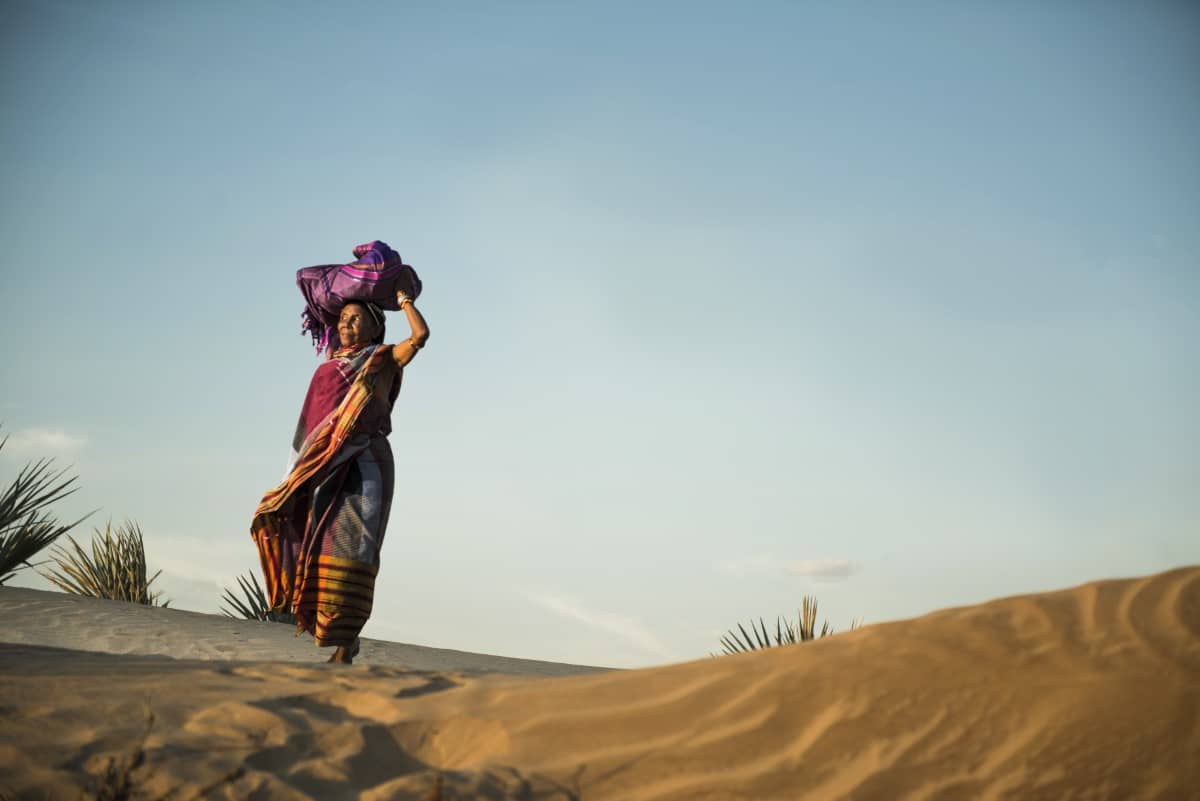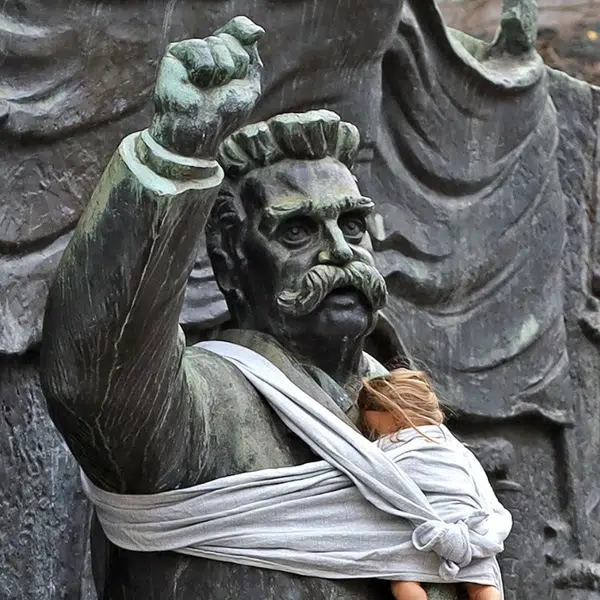
Kenyan photographer Migwa Nthiga is shedding light on Indigenous culture in his evocative series of portraits, Walks Of Life. For the series, Nthiga followed Indigenous Nilotic people as they went about their daily activities. Living close to Lake Turkana in Northern Kenya, these people have faced increasing hardship due to recurring droughts in the area. By taking their portraits, Nthiga hopes to shed light on this beautiful culture and the struggles provoked by the climate crisis.
From a creative standpoint, Nthiga's dreamy imagery combines the skill of candid photography with a visual sensibility that results in photos that appear to be ripped from a fashion magazine. With dramatic lighting and interesting color choices, the portfolio has a cinematic quality that elevates the photography.
Looking at the photos, it should come as no surprise that Nthiga has experience in advertising. His images not only tell a story, but they also “sell” the viewer on the narrative. He is clearly able to transform his previous professional experience in selling brands into a vehicle for telling human stories.
We had a chance to speak with Nthiga about how he got his start in photography and why it was important for him, as a native Kenyan, to tell the story of this Indigenous culture. Read on for My Modern Met's exclusive interview.

How did your love for photography begin and when did it become a serious profession?
My love for photography began when I was a sophomore at university studying Public Relations and Marketing. I took a film photography course as an elective and fell in love with the art form from day one. It was the only course I studied and practiced ahead of the course plan. My best friend and I would write down fashion photography concepts and shoot them in his backyard with friends of ours posing for free. We would lose track of time doing this…it was great!
In my last year of university, I did my three-month mandatory internship at a formidable advertising agency named Scanad. They eventually hired me full-time, and I spent the next two and a half years soaking in the experience of managing brand campaigns and setting up commercial photoshoots. This is when I saw the commercial viability of photography and planned my exit strategy to form my own commercial photography business.

You do lots of different types of photography, but your portraits and documentation of people are particularly striking. What fulfills you creatively about photographing people?
After shooting print advertisements for 10 years, I felt it was time to switch it up and tell deeper, more meaningful human interest stories. This came about after shooting brand campaigns that really put ordinary people from different walks of life at the center of their marketing communications strategies.
What fulfills me creatively about photographing people is the opportunity to tell real-life stories that inspire and inform others about different ways of life. Documentary photography also allows me to travel and visit places I have never been. I learn from these experiences, and it's just like being in university, only cooler and more insightful. I also have the freedom to be creative and photograph stories that move me as opposed to shooting a brief that has the goal of increasing brand equity.

How did the idea for Walks Of Life come about?
My Walks Of Life series was born through the need to tell authentic Nilotic Indigenous stories. Often we get international foreign photographers coming to tell these stories with their own biases and agendas that neither reflects the true nature of the tribes they have come to photograph nor make any sustainable impact in their lives.
Walks Of Life is the first of many projects I will be working on to promote travel expeditions to these far remote areas so that people can experience firsthand the beautiful way of life of the people in Northern Kenya. Indigenous communities have a lot of knowledge that we can learn from as we look for sustainable solutions to the climate crisis. There is also increased food insecurity due to prolonged drought in our country, and the nomadic pastoralists are bearing the brunt of this as they travel great distances in search of food and water, so learning from their beautiful ways of conservation would also help them. As my bigger goal, I would like to travel and tell more African Indigenous stories so more people in Africa and around the world can be inspired to move faster in developing climate solutions.

Why was it important for you, as a native of Kenya, to tell this story?
It was important for me as a native of Kenya to tell this story to show that Kenyan storytellers have a voice and unique perspectives to share with the wider world. We need more Kenyan and African storytellers to tell our own stories because they are authentic and homegrown. This will also create job opportunities for young Kenyans and Africans at large that will keep them off the street and away from crime as we collectively retell the African narrative.

What was the most challenging part of creating this story?
The most challenging part of creating this story was convincing the people we photographed that we were not there to exploit them, as this is their view of photographers and filmmakers due to the selling of their stories overseas and making profits that the Indigenous communities don't benefit from. We gave them money and bought them food, but there need to be more sustainable programs that can keep them going for longer periods of time.

So much photography we see of African cultures is taken by foreigners. Can you share a bit about why you think that is?
I think it's because foreigners are curious about African cultures. There is something magical about Indigenous cultures that we all feel drawn to; their simple way of life connected to nature where we all came from. I think modern humans were sold a dream that has made us stray away from what is truly important in this life and as a result, we have damaged the earth in pursuit of this dream. Seeing Indigenous communities living in tandem with nature could be speaking to us at a deeply cellular maybe even spiritual level, and that could be why we are so drawn to them. So maybe that's why foreigners like to photograph African cultures for them and their audiences who feel this need to connect to something deeper.
To others, it could just be to make money from the unique stories they find in Africa.

Do you see African photographers starting to get more opportunities to show their own perspectives to an international audience?
African photographers are starting to get more opportunities to show their own perspectives to an international audience thanks to the internet. Social media is playing a huge part in this as we see more African visual artists sharing their work and creating interest in trips to Africa by international tourists, explorers, researchers, and the like. African photographers are also proud of what Africa has to offer, and I think that's also what's driving content creation.

What do you hope that people take away from these photos?
I hope my photos inspire people to be more curious about African cultures and visit Africa to have first-hand interactions with them. I hope my photos inspire other African storytellers to take part in retelling the African narrative. I hope my photos help in showing the importance of mending our relationship with nature so we can find sustainable solutions to the climate crisis.


What are you working on now?
I am working on creating cultural exchange spaces in Northern Kenya where people can come and learn about the Indigenous communities they wish to film and photograph as well as teach the Indigenous community members different skills they can use to improve their own lives. This includes how to tell their own stories using affordable smartphone devices that help them curate their own content and document their own way of life. This could be an alternative source of income for them as they would have full rights to their content that they could sell either digitally or hardcopy prints through photography exhibitions at these spaces.






















































































